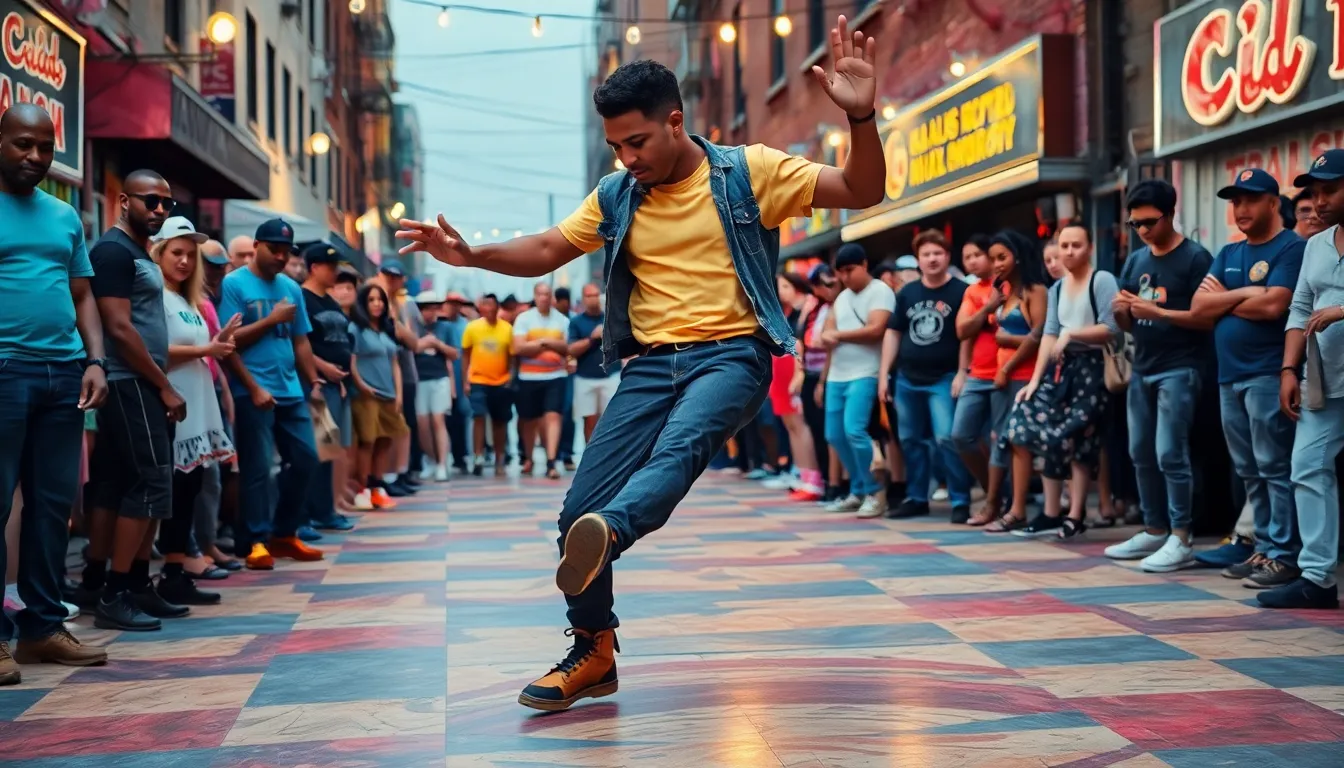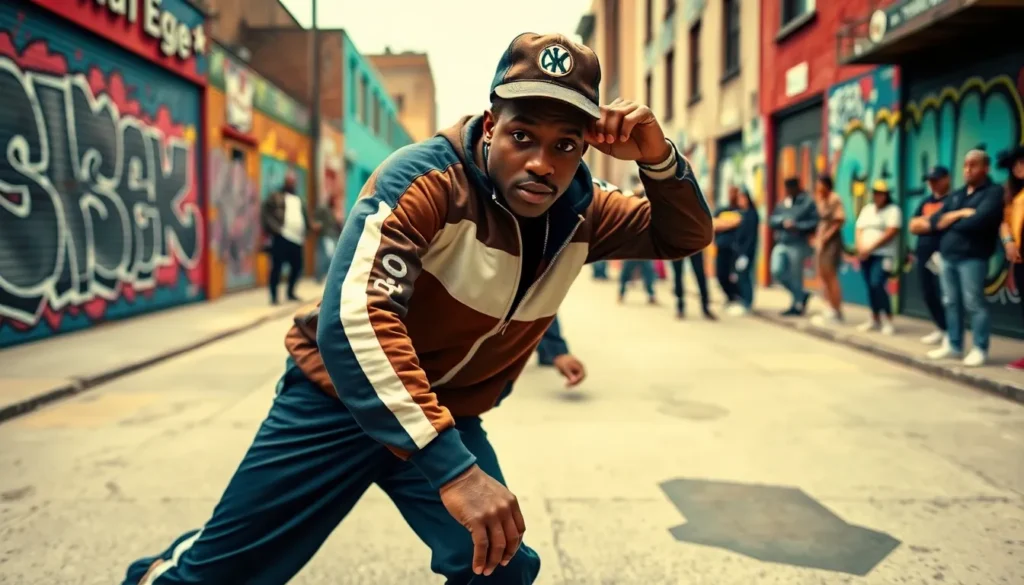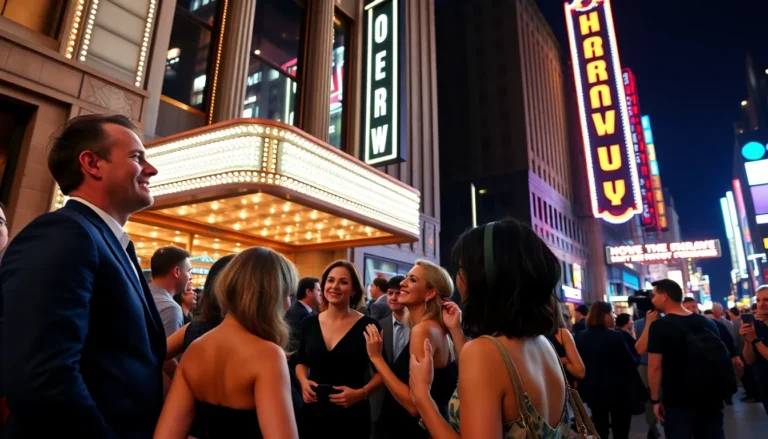Breakdancing in the Olympics? You might think it sounds like a plot twist from a quirky movie, but it’s reality! This high-energy dance form, born from the streets, is now strutting its stuff on the world’s biggest athletic stage. It’s not just about spinning on heads and defying gravity; it’s about creativity, culture, and athleticism all rolled into one.
Table of Contents
ToggleOverview of Breakdancing
Breakdancing, also known as b-boying or b-girling, originated in the 1970s in the South Bronx, New York City. This dynamic form of street dance combines intricate footwork, athletic moves, and artistic expression. Competitors showcase their skills in battles, where creativity and technique play crucial roles. The dance style drew influences from various genres, including hip-hop, funk, and even martial arts.
Judging in breakdancing involves evaluating competitors on several criteria, including timing, style, and originality. Performers impress audiences with freezes, spins, and flips that require significant strength and flexibility. Each performance reflects the dancer’s unique character and background, emphasizing the cultural origins of the art form.
As breakdancing gained global popularity, it fostered a sense of community among dancers. Events and competitions flourished, leading to the establishment of international tournaments. This growing recognition culminated in its inclusion in the Olympic Games, making it a historic moment for the dance community.
Training for breakdancing demands rigorous physical conditioning and practice. Dancers often spend hours honing their skills, focusing on techniques that enhance their performance. The journey of a breakdancer involves not just physical training, but also a commitment to understanding the dance’s cultural significance.
Incorporating breakdancing into the Olympics showcases its evolution and celebrates its vibrant history. The Olympic platform provides a chance to highlight the athletic prowess behind the movements, drawing attention to the commitment of dancers worldwide. This inclusion signals a shift in traditional sports perceptions, opening doors for more urban and diverse disciplines.
The Journey to the Olympics

Breakdancing’s path to the Olympics reflects its evolution as a respected form of athleticism and artistry. This journey is rooted in its cultural origins and the milestones that led to its global recognition.
Historical Context
Breakdancing emerged in the 1970s in the South Bronx, New York City, representing a fusion of cultural influences and social expression. Street parties featured fierce dance battles, creating a platform for dancers to showcase their skills. Wide-ranging styles developed, allowing individual expression and cultural storytelling. By the 1980s, breakdancing gained mainstream attention, with films and media portraying it as a vibrant aspect of hip-hop culture. Its dynamic nature captured the interest of both artists and audiences.
Key Milestones
The establishment of international breakdancing competitions marked significant steps in its formal recognition. In 1990, the first annual battle, known as the Battle of the Year, drew talent from around the globe, showcasing diverse styles and fostering a sense of community. Recognition from organizations like the World DanceSport Federation signified a shift towards institutional acknowledgment. Inclusion in the 2024 Paris Olympic Games represents a historic milestone, spotlighting breakdancing as an athletic discipline. This selection embraces its dynamic creativity, cultural significance, and growing popularity around the world.
Criteria for Inclusion
Breakdancing’s inclusion in the Olympics stems from several key criteria reflecting its multifaceted nature.
Appeal to Youth
The sport captivates a younger audience, aligning with the Olympics’ goal to attract more youthful viewers. Breakdancing’s vibrant movements and street culture resonate with today’s generation. Competitors express individuality through their style and creativity, drawing in those who appreciate artistic forms of expression. Events like the Red Bull BC One demonstrate the allure of breakdancing, showcasing elite dancers who push the limits of physical performance. Additionally, its connection to music and urban culture enhances its appeal, making it relevant and exciting for young fans.
Global Reach
Breakdancing thrives on a global scale, uniting diverse communities through dance. International competitions, such as the Battle of the Year, attract participants from various countries, highlighting its worldwide popularity. The sport’s roots in different cultures contribute to its broad appeal. Countries like South Korea, France, and the United States have established vibrant breakdancing scenes, fostering a competitive spirit across continents. This global perspective positions breakdancing as a true international sport, aligning with the Olympic values of unity and diversity.
Impact on the Olympics
Breakdancing significantly impacts the Olympics by introducing a vibrant element of urban culture. Its inclusion celebrates diversity, creativity, and athleticism on a global stage.
Cultural Significance
Cultural roots drive breakdancing, linking it to communities and social movements. Originating from the Bronx, breakdancing reflects the struggles and expressions of youth in urban settings. Competitors honor their heritage while showcasing their skills, making each performance a tribute to their culture. Viewers experience not just a competition but a celebration of artistic expression and cultural identity. Events draw participants who channel their backgrounds into their routines, fostering authentic connections among dancers and audiences. Breakdancing connects generations, inspiring new dancers to embrace their cultural stories and narratives through movement.
Boosting Diversity
Diversity thrives within breakdancing, attracting participants from varied backgrounds. Its international appeal encourages representation across continents, promoting inclusivity. Countries like France, South Korea, and the United States highlight the sport’s global reach, showcasing unique styles and interpretations. Each battle showcases different cultural influences, enriching the overall experience. Spectators witness an array of techniques and creativity that reflect distinct histories and perspectives. The Olympics benefits from this diversity, as audiences engage with athletes representing their nations while finding common ground through dance. Such representation fosters unity, underscoring the Olympics’ mission to celebrate differences and promote harmony among cultures.
Breakdancing’s inclusion in the Olympics marks a pivotal moment in the evolution of sports and cultural representation. By embracing this dynamic art form, the Olympics not only showcases athletic prowess but also celebrates creativity and cultural heritage. This vibrant discipline connects communities across the globe and engages a younger audience, aligning perfectly with the Olympics’ vision of unity and diversity. As breakdancing takes center stage in Paris 2024, it promises to inspire and captivate viewers, reinforcing the importance of inclusivity in sports. This historic milestone is a testament to the enduring power of dance as a means of expression and connection, enriching the Olympic experience for all.





